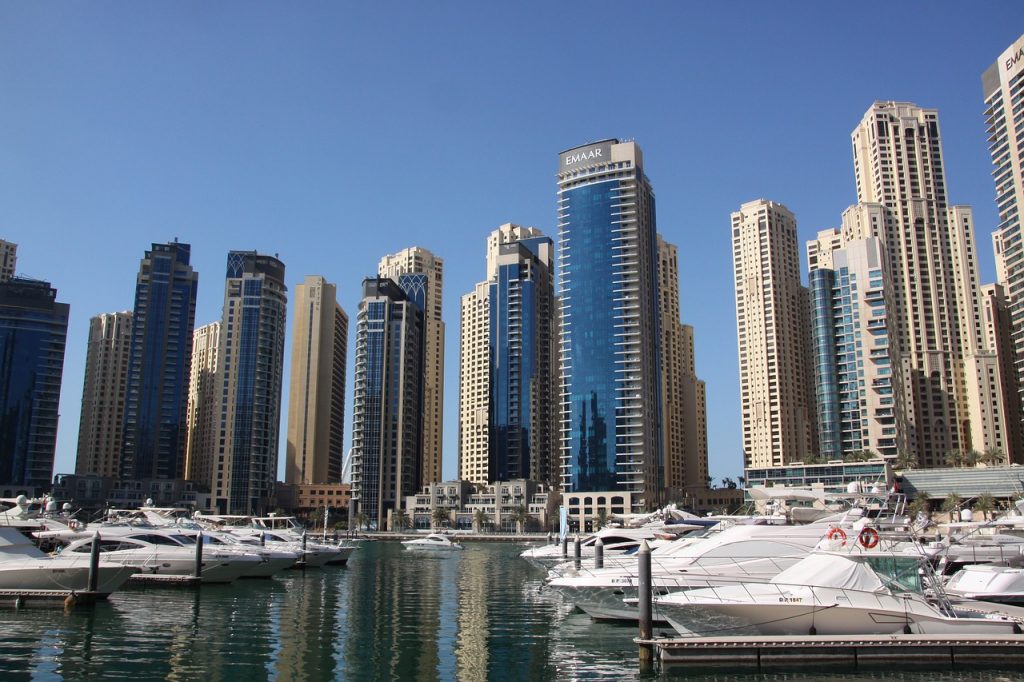Navigating a real estate transaction can be exciting, but it’s also filled with legal obligations, fine print, and potential risks. Whether you’re buying your first home, selling an investment property, or entering a commercial lease, the legal complexities can be overwhelming. This is where professionals like a conveyancing lawyer or real property specialists step in to provide crucial guidance, ensuring your transaction runs smoothly, securely, and in full compliance with all relevant laws and procedures.
Property deals involve far more than agreeing on a price and signing a contract. There are regulations, disclosures, titles, encumbrances, and zoning laws to consider—many of which can affect your ability to own, use, or resell the property. Without legal support, buyers and sellers alike run the risk of overlooking really important details that could lead to delays, disputes, or financial losses.
One of the key advantages of having legal support is clarity. Legal professionals can explain what’s in the contract, what your obligations are, and where hidden risks may lie. They can identify unusual clauses, negotiate on your behalf, and ensure that the agreement reflects your interests—not just those of the other party. This oversight is especially important in deals involving unique conditions, off-market arrangements, or custom terms.
Legal support also protects you from inadvertently breaching legal requirements. In real estate, failing to meet deadlines or overlooking a document can have serious consequences, including financial penalties or loss of the deal. Legal professionals manage timelines, coordinate with the necessary parties, and make sure every detail is addressed before settlement. This is particularly helpful when juggling tasks like finance approval, building inspections, and final walkthroughs.
For buyers, legal guidance can reveal whether a property is genuinely worth pursuing. It’s not uncommon for issues to emerge during due diligence—outstanding land tax, planning restrictions, easements, or structural problems that may not be immediately visible. Legal professionals investigate title history, request searches, and interpret technical reports to give buyers a complete picture. This enables informed decisions and avoids unwanted surprises after the transaction is finalised.

Sellers also benefit significantly from legal support. When preparing a property for sale, a legal professional ensures the correct documentation is in place, including the contract of sale, a disclosure statements, and certificates. They verify that all representations about the property are accurate and help sellers meet legal obligations to avoid post-sale disputes. With professional help, the selling process becomes more secure and legally watertight.
In more complex transactions—such as commercial sales, subdivisions, or off-the-plan purchases—legal support becomes even more essential. These deals often involve multiple stakeholders, detailed agreements, and long-term commitments. A legal professional provides oversight that prevents misunderstandings and enforces clear expectations from the outset. Their involvement also reduces the risk of disputes, which can be costly and time-consuming if left unresolved.
Legal support also contributes to smoother negotiations. Property deals often involve back-and-forth between parties on contract conditions, pricing, inclusions, and settlement dates. Having someone with legal expertise means you’re not negotiating blindly. You have someone who understands the implications of each clause and can propose fair, legally sound solutions that protect your interests.
Another benefit is peace of mind. Buying or selling property is one of the largest financial decisions most people make. Having a trusted legal professional guiding you through the process reduces stress and builds confidence. You can focus on the excitement of your move or investment, knowing that the legal aspects are being handled correctly and professionally.
For investors, legal professionals can also assist with asset protection and tax efficiency. They may work alongside financial advisors or accountants to structure ownership in a way that suits your goals—whether that’s buying through a trust, setting up joint ownership, or understanding capital gains obligations. This holistic view of your property deal ensures the legal structure aligns with your financial strategy.
In some cases, legal professionals help resolve conflicts before they escalate. Disagreements about settlement terms, contract conditions, or property conditions can cause deals to fall apart. When legal support is already in place, these issues can be addressed quickly and constructively, minimising disruption and allowing the transaction to proceed. Usually early legal advice can make all the difference between a resolved issue and a drawn-out dispute.
Furthermore, legal support is valuable even after the transaction is complete. Should questions arise about rights of access, boundary disputes, or unfulfilled contract conditions, your legal adviser can step in to provide ongoing assistance. Having someone familiar with the original transaction helps address post-settlement issues with accuracy and efficiency.
Technology and online platforms have simplified many aspects of property transactions, but legal complexity remains. In fact, the rise of digital contracts and automated processes has made legal support even more important. It ensures that while documents may be signed faster, they’re also being reviewed with the same rigour and scrutiny as traditional contracts.
Choosing the right legal professional is just as important as having one. Look for someone who understands local laws, communicates clearly, and has a track record in handling similar property types or transactions. A good legal adviser won’t just react to problems—they’ll anticipate them and put safeguards in place from the beginning.
In conclusion, the benefits of having legal support in real estate deals are far-reaching. From protecting your rights to ensuring your contract reflects your intentions, legal professionals play a critical role in securing your success. Whether buying, selling, or investing, their guidance adds certainty, clarity, and structure to what is otherwise a highly complex process. When the stakes are high, expert support isn’t just helpful—it’s essential.




















 Email advertising, search engine optimization and paid press all do an excellent job of bringing prospects and leads, but they still are not as successful as an in-person meeting sealed with a handshake together with a business card exchange.
Email advertising, search engine optimization and paid press all do an excellent job of bringing prospects and leads, but they still are not as successful as an in-person meeting sealed with a handshake together with a business card exchange. What exactly are young people and aspiring homeowners to do right now? Let’s say you have a savings program and a monthly budget, your savings account is growing steadily, you are diligently socking away your shift, you are avoiding spending large at the pub on nights out, and you have even cut down avocado toast and soy lattes, and don’t forget cutting
What exactly are young people and aspiring homeowners to do right now? Let’s say you have a savings program and a monthly budget, your savings account is growing steadily, you are diligently socking away your shift, you are avoiding spending large at the pub on nights out, and you have even cut down avocado toast and soy lattes, and don’t forget cutting  Managed funds see your money directed into the stock exchange, but rather than you going directly to your stockbroker or online to make trades, or on house
Managed funds see your money directed into the stock exchange, but rather than you going directly to your stockbroker or online to make trades, or on house  Even if a guide comes to your site and does not leave their contact information, it is still possible to gather plenty of information about them. Lead monitoring follows a lead, can track where they come from, records which links they click and so forth. This builds up a detailed personal profile for each guide. If the lead does leave their email or contact number, you can then reach out. Constantly gathering online data enables you to understand which parts of your site get the most attention so that you can optimize the website. Personal profiles also let you get in touch with leads according to their unique interests and online activity.
Even if a guide comes to your site and does not leave their contact information, it is still possible to gather plenty of information about them. Lead monitoring follows a lead, can track where they come from, records which links they click and so forth. This builds up a detailed personal profile for each guide. If the lead does leave their email or contact number, you can then reach out. Constantly gathering online data enables you to understand which parts of your site get the most attention so that you can optimize the website. Personal profiles also let you get in touch with leads according to their unique interests and online activity. Therapy of acne
Therapy of acne It turns out, however, that in spite of the importance of this crucial evolution of cars, this is one of the problems that is a lot more difficult to conquer than it first seems. Part of the problem is that as automobiles have advanced and various technologies are integrated into them, they have evolved into enormously complex machines. Rather than just adding slight changes to your car or the way it looks,
It turns out, however, that in spite of the importance of this crucial evolution of cars, this is one of the problems that is a lot more difficult to conquer than it first seems. Part of the problem is that as automobiles have advanced and various technologies are integrated into them, they have evolved into enormously complex machines. Rather than just adding slight changes to your car or the way it looks,  If ever there was an industry ripe for disruption, and needing a technician overhaul; the automotive sector is it. That is why many conventional car makers are involved, and why many tech companies are salivating at an opportunity to have a piece of the multi-trillion-dollar international automotive sector. The technological and business model for autos is slowly but surely moving towards a software-and-services-focused strategy. It is also why companies like Tesla have made such a splash. Despite its very small sales, it is regarded as a credible effort to drive the sort of organizational and technological disruption that lots of individuals believe is required to transform the automotive sector. In truth, though, due to the inherent and ingrained nature of the automobile supply chain, even Tesla must follow a number of the conventions of numerous Tier 1 providers, etc., that its rivals use. The issue is that deeply embedded.
If ever there was an industry ripe for disruption, and needing a technician overhaul; the automotive sector is it. That is why many conventional car makers are involved, and why many tech companies are salivating at an opportunity to have a piece of the multi-trillion-dollar international automotive sector. The technological and business model for autos is slowly but surely moving towards a software-and-services-focused strategy. It is also why companies like Tesla have made such a splash. Despite its very small sales, it is regarded as a credible effort to drive the sort of organizational and technological disruption that lots of individuals believe is required to transform the automotive sector. In truth, though, due to the inherent and ingrained nature of the automobile supply chain, even Tesla must follow a number of the conventions of numerous Tier 1 providers, etc., that its rivals use. The issue is that deeply embedded. preschools and concluded that the way young women were dressed inhibited their ability to manoeuvre around. Turns out it’s tough to creep around in a dress. The women also had to track how they moved in their own clothes. Wearing a dress meant you could not follow suit once your playmates propped their feet up on a desk. The girls’ clothes were a continual source of diversion. Tights needed to be yanked up. Bows needed to be straightened. Martin watched five year old women
preschools and concluded that the way young women were dressed inhibited their ability to manoeuvre around. Turns out it’s tough to creep around in a dress. The women also had to track how they moved in their own clothes. Wearing a dress meant you could not follow suit once your playmates propped their feet up on a desk. The girls’ clothes were a continual source of diversion. Tights needed to be yanked up. Bows needed to be straightened. Martin watched five year old women  We tested it for four months in an organisation with approximately 200 users. In that moment, it noted 22 bugs and all were fixed automatically. Each solution was discovered on those “night shifts”, meaning that when the developer arrived in the office in the morning, a list of suggested bug fixes were awaiting them. The concept is to set the developer in control and change their job, meaning less regular checking and more time for creativity. It is roughly equivalent to how spell checkers have taken a lot of the plod from proof reading a document. Both tools support the author, and decrease the amount of time you likely spend swearing at the screen. We have been able to prove that the identical system could be applied to other jobs, including making applications run faster and improving the accuracy of applications designed to forecast things.
We tested it for four months in an organisation with approximately 200 users. In that moment, it noted 22 bugs and all were fixed automatically. Each solution was discovered on those “night shifts”, meaning that when the developer arrived in the office in the morning, a list of suggested bug fixes were awaiting them. The concept is to set the developer in control and change their job, meaning less regular checking and more time for creativity. It is roughly equivalent to how spell checkers have taken a lot of the plod from proof reading a document. Both tools support the author, and decrease the amount of time you likely spend swearing at the screen. We have been able to prove that the identical system could be applied to other jobs, including making applications run faster and improving the accuracy of applications designed to forecast things. They are not all in Fitzroy
They are not all in Fitzroy Retro Style
Retro Style The new,
The new,  opposed to the urgency of the day job, says Andy Mee, a ‘business doctor’ covering the
opposed to the urgency of the day job, says Andy Mee, a ‘business doctor’ covering the  it ready to go to your designer. Not having
it ready to go to your designer. Not having 


 If you have been to the world famous lit up streets in Las Vegas, you may have thought to yourself what the power bill would look like to power so many lights in the city, let alone a few singular streets lit up like it’s midday. It is quite a sight for tourists but is surely costing an arm and a leg. Recently Las Vegas has set its sights on harnessing the sunny weather in the district and utilising that energy to power the street lighting that is draining the power grid.
If you have been to the world famous lit up streets in Las Vegas, you may have thought to yourself what the power bill would look like to power so many lights in the city, let alone a few singular streets lit up like it’s midday. It is quite a sight for tourists but is surely costing an arm and a leg. Recently Las Vegas has set its sights on harnessing the sunny weather in the district and utilising that energy to power the street lighting that is draining the power grid. EXCLUSIVE: Striking new pictures released of Plymouth’s £34million world-class attraction
EXCLUSIVE: Striking new pictures released of Plymouth’s £34million world-class attraction
 The heart stopping moment two daredevils were hanging hundreds of feet above the ground from
The heart stopping moment two daredevils were hanging hundreds of feet above the ground from  For fans, there are (as The Beach Boys famously sing) good, good, good, good vibrations. But there are only bad, bad, bad, bad vibrations when you are a delicate treasure more than 350 years of ages.
For fans, there are (as The Beach Boys famously sing) good, good, good, good vibrations. But there are only bad, bad, bad, bad vibrations when you are a delicate treasure more than 350 years of ages. The Queensland State Government has made a claim that the massive new electricity business that it has created won’t compete with electricians but that has been debunked by mobile data capture evidence that shows electricians and solar installers are already being spread across Queensland.
The Queensland State Government has made a claim that the massive new electricity business that it has created won’t compete with electricians but that has been debunked by mobile data capture evidence that shows electricians and solar installers are already being spread across Queensland. An online shopping site called wish.com, was recently advertising some plus size leather look shorts at an extremely low price of only $9. But what caused some super reactions was how they were modeled on the site.
An online shopping site called wish.com, was recently advertising some plus size leather look shorts at an extremely low price of only $9. But what caused some super reactions was how they were modeled on the site.